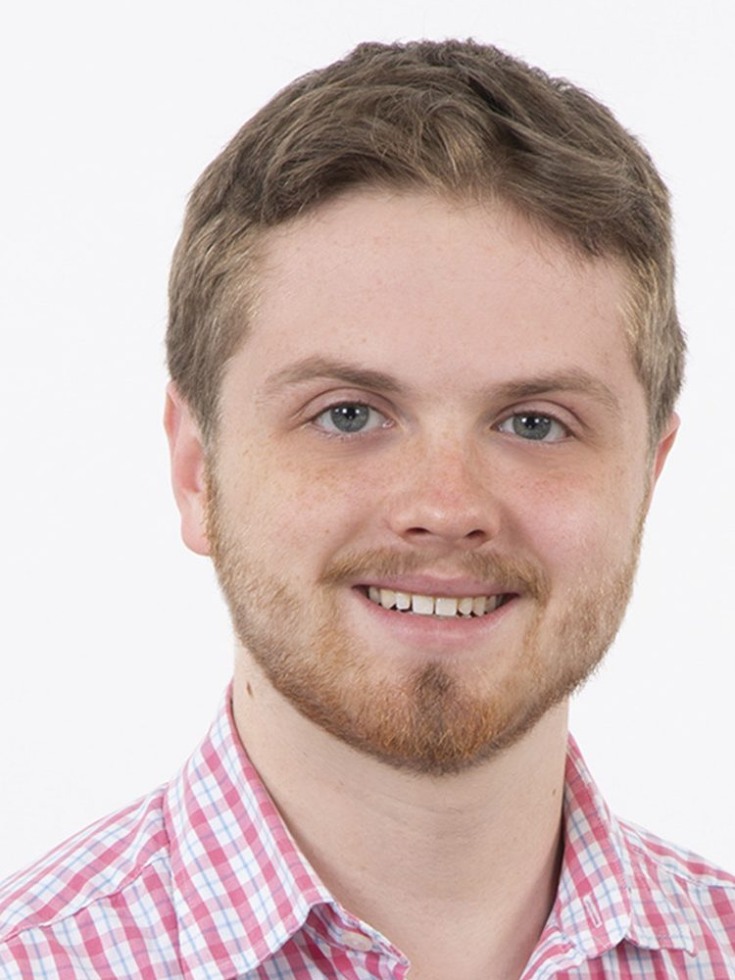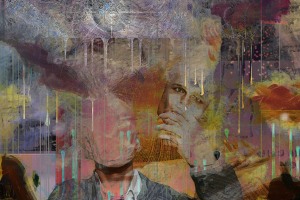With a mix of personal perspective and research analysis, Unmasked addresses the public health value of greater openness and self-advocacy regarding autism. The previous article discussed the individual and macro factors that motivated the author to write this series.
Unmasked: Autism Openness and Its Impact on Self-Advocacy in Daily Life
This is the second article in Unmasked, a series by undergraduate public health concentrator Chris Walsh ’24.5.
When an autistic person chooses to share their diagnosis with someone, they broaden their options for self-advocacy. The process of advocating one’s autism-related needs with a supervisor, teacher, or friend is harder if one is not yet comfortable using the word autism, for fear that the support they are requesting might tip others off about their diagnosis. Though the process varies by circumstance—asking for academic accommodations is different from telling a friend that you prefer fireworks with earphones on—open conversations can open the door to more personalized, meaningful ways to address your needs across settings.
However, stigma around autism remains strong. An employee might fear being seen as less capable. A student might fear social isolation. Fears like these make it undesirable to be “found out” before one is ready. This situation can be confining for people on the spectrum who are currently masking.1 An autistic person might be aware of accommodations that would benefit them. They may have learned what works for them to be comfortable and successful in a variety of situations. Still, the social pressure to mask could preclude them from fully advocating for their needs.
Jane is a ninth-grader at a new school, and two academic accommodations have historically worked for her. She has received additional time on math tests and worn noise-canceling earphones while doing in-class worksheets.
The former accommodation is relatively discreet. Jane either takes her math tests in a separate room with the other students who receive extra time, or she sits with everyone else but stays longer. Even if Jane’s classmates see her using this accommodation, they may not know her specific disability; people with various disabilities may receive additional time on tests.
The latter accommodation, though equally helpful to Jane, is indiscreet. Jane’s earphones are a tangible object, and her classmates can see any time that she uses them. Since sound sensitivity is more directly associated with autism than other disabilities common at a high school (and, perhaps, since noise-canceling earphones loom especially large in the media portrayals of autism that reach millions), Jane’s earphones might tip classmates off to her autism.
This isn’t inherently a problem. But it becomes one when we consider that autistic students are three to four times as likely as peers without disabilities to be bullied at school.2 At her old school, Jane’s classmates mocked her for her earphones, even as she experienced less distress and her teachers commended her for her improved focus. At her new school, Jane strives harder to mask her diagnosis. While she still receives additional time on essays—this accommodation is discreet enough—she leaves the previously demonstrated benefits of her earphones on the table in order to fit in.
This outcome insufficiently addresses Jane’s needs, limiting her growth and contentment. Jane is aware of the potential benefit, but due to a precedent of teasing when receiving her indiscreet accommodation, she is discouraged from accessing that benefit.
To address her unmet needs, Jane might seek someone with whom she can discuss her diagnosis openly—perhaps a trusted teacher, guidance counselor, or provider. Here, it is important to differentiate between knowledge of, and openness about, one’s diagnosis. While Jane’s teachers already know she is autistic, whether or not she has open conversations about it with them is a different issue.
Opening up to a teacher does not require her to open up to all of her teachers, or all of her classmates. This takes us back to a theme from my first article: there is room for personalization and gradual progression in how someone discloses.
Stigmatic environments, as well as the prospect of being bullied due to one’s differences, can be strong disincentives to using accommodations even if they are granted

Assuming that a teacher, counselor, or supervisor appears empathetic, opening up can help improve the quality of accommodations. If Jane decides that her counselor is trustworthy enough to confide in, she can begin to advocate for her needs with more specific language now that sharing her diagnosis is a lesser concern. For instance, Jane and her counselor might propose that she have time built in for a sensory break when returning to class from long assemblies. Also, Jane’s counselor might be able to act as liaison, discreetly advocating for her needs with the teachers she does not trust as much to open up to one-on-one.
Still, this is just an example. Things might not work as well in practice for Jane.
Her counselor’s empathy does not guarantee her teachers’ empathy. Moreover, even if all of Jane’s teachers follow her counselor’s instructions and allow her an accommodation, this does not guarantee that her classmates will be similarly tolerant and accepting.
Stigmatic environments, as well as the prospect of being bullied due to one’s differences, can be strong disincentives to using accommodations even if they are granted. Even if Jane is not bullied at her new school, the bullying that other autistic students experience might understandably lead her to believe that using her accommodations would give her something of a scarlet letter.
Similar environmental factors influence accommodations-and-openness decisions beyond the school years. University of Toronto researchers who reviewed studies about workplace disclosure and accommodations found that “fear of experiencing negative attitudes was a common reason for non-disclosure.” A 2019 Harvard Business Review article, offering a more macro-level look at disability disclosure in the workplace, identifies similar themes: professionals hiding their disabilities may “fear teasing or harassment. They worry their relationships with coworkers will change. Many express concerns that their manager might see them as lazy or less capable, and that their career progress will stall as a result.”
Given the school victimization rates mentioned earlier, these fears are likely to influence autistic people as they enter the workplace. Also, since an autism diagnosis is not always visible to others, those driven to mask may find themselves inadvertent audiences for derisive remarks about autistic people—sometimes from the mouths of friends, relatives, or managers—that can hinder openness, unmasking, and destigmatization.
For autistic people considering disclosure, I hope that the prospect of better self-advocacy opportunities in daily life can help tip the scale. I also recognize that some autistic people in less tolerant environments may not want to open up at all. There were many years prior to high school that I was convinced I would mask fully and indefinitely. Disincentives to open conversations can be strong, and I cannot ask of this group what I would not have asked of myself at that stage of my life. Looking to the future, though, there is hope in degrees of openness: someone can disclose at the pace and scale that suits them best. Moreover, if those who are comfortable opening up do so, they can help lessen disincentives to openness for those who are not.
On a broader scale, collaboration is crucial. The burden of changing other people’s intolerance of autistic people should not be the burden of autistic people. As noted in my first article, some people do not have the privilege of appearing non-autistic as often as others, and the social pressure to mask comes from stigma toward the autism spectrum in general. Many of those who can mask will likely continue to do so as long as this stigma exists. The most recent CDC figures estimate that 2.21% of the U.S. population is autistic. 97.79% is not.3 4 For this 97.79%, plurality comes with responsibility. An environment of tolerance and openness cannot be achieved without the active cooperation and support of enough non-autistics, particularly those in positions that come with the opportunity and responsibility to do so. Just a few examples include teachers, guidance counselors, and managers. The non-autistic population can best do this by actively listening to, and partnering with, autistic stakeholders to identify changes that make it easier to advocate for one’s needs. School administrators crafting anti-bullying strategies might devote attention to autistic students that is proportional to their higher rates of victimization. Higher-education institutions might establish autistic-driven, autism-specific community and academic-support programs (Brown lacks such a program, but New York University offers an example). Employers might recognize the value of job accommodations and personalization in ensuring that employees have the best shot at doing their best.
Openness can boost self-advocacy opportunities today for autistic people who have someone they can trust. To extend the same benefit to autistics in less tolerant environments, our best bet is alleviating deterrents with coordinated macro strategies.
Individual initiative can benefit autistic people who find their current environments tolerant and comfortable, or who have a trusted person in an intolerant environment. Simultaneously, greater coordination to reduce social deterrents to openness can bring more autistic people closer to accessing these same self-advocacy benefits.
Notes
1 In the context of autism, masking is when an autistic person strives to pass as nonautistic. Social stigma around autism is a common motivating factor, and a growing body of research is examining the relationship between masking and autistics’ mental health. This research will be discussed in greater detail in an upcoming article in Unmasked.
2Per bullying research reviews led by Daniel Hoover and Christophe Maïano, respectively. Maïano’s review further reports that autistic students are twice as likely to experience verbal forms of bullying–a concerning figure given that verbal bullying is harder to spot than physical forms.
3 The breakdown for U.S. children is very similar.
4 The number of diagnosed autistic adults is likely smaller than the actual number of autistic adults. Either way, the vast majority of the population would still be non-autistic.
Christopher Walsh ‘24.5 is undergraduate at Brown University concentrating in public health. To contact Chris directly, please email public_health@brown.edu, subject line: autism.
